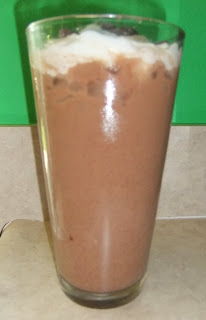 I've decided it doesn't count as a new recipe since the point of this resolution is to make things I can eat for dinner. Although coffee is a necessary part of my life, it doesn't fit the spirit of the challenge.
I've decided it doesn't count as a new recipe since the point of this resolution is to make things I can eat for dinner. Although coffee is a necessary part of my life, it doesn't fit the spirit of the challenge.It was pretty tasty, and I'm already thinking of ways to make it better. It involves a blender.
Recipe #20 was no knead bread. Apparently this took the cooking world by storm a few years ago, but since I'm not plugged into the cooking world I did not know. I read about it first in Cathy Erway's book The Art of Eating In.
I used this recipe. I have a standard bread recipe, and it uses a packet of active dry yeast for one loaf. This recipe calls for one-fourth of a teaspoon. A packet of yeast has about two and a half teaspoons. I was so stunned I looked up another recipe to make sure it wasn't a typo.
I mixed water, salt, flour (I used half bread flour and half whole wheat flour), and yeast, covered with plastic wrap and let it sit on my counter to ferment. Because of my schedule, I was forced to leave it on my counter for nearly two days, but from what I read in that book, I'm not the first to do this and nobody died.
Here's what it looked like after being mixed:

And here's what it looked like after sitting around for a couple of days:
 It rests for 15 minutes, then I shaped it into a ball and stuck it between floured kitchen towels (non-fuzzy types) to rise. The rising didn't go as well as I expected. I waited around three hours, and the last half an hour I put it in a slightly warm oven to try to encourage it. I don't know how it's supposed to look, but I was expecting it to be taller.
It rests for 15 minutes, then I shaped it into a ball and stuck it between floured kitchen towels (non-fuzzy types) to rise. The rising didn't go as well as I expected. I waited around three hours, and the last half an hour I put it in a slightly warm oven to try to encourage it. I don't know how it's supposed to look, but I was expecting it to be taller.The bread is baked in a very, very hot oven inside a cast iron dutch oven that has been preheated as well. The dutch oven ensures that it gets a good crust on the loaf. It cooks for a total of 45 minutes.
 This is the texture of the interior:
This is the texture of the interior: It's... much more yeasty than I expected. It's not bad, but it's different than any other bread I've made. If anyone has any experience with this kind of recipe, I'd greatly appreciate advice. Did I do this right? Is this how it's supposed to look? How should it taste?
It's... much more yeasty than I expected. It's not bad, but it's different than any other bread I've made. If anyone has any experience with this kind of recipe, I'd greatly appreciate advice. Did I do this right? Is this how it's supposed to look? How should it taste?This was an interesting experiment. I'm a bit relieved I didn't fall in love with it. It would be dangerous to have freshly-baked bread around the house all the time!
I adore fresh-baked bread, but lack the gene that allows me to make it, so I have no advice. If you need help eating your next experiment, please let me know.
ReplyDeleteLynn